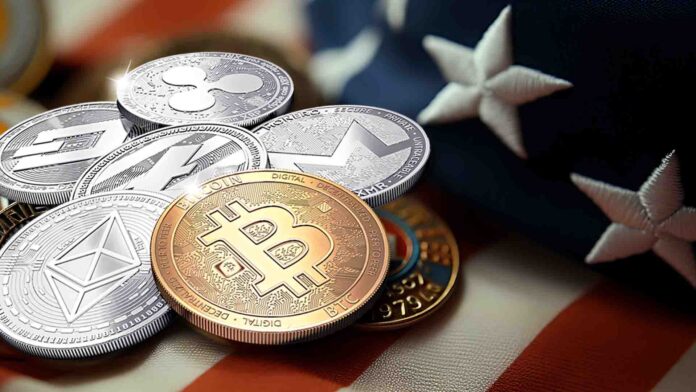Key Insights :
- The U.S. government requires all federal agencies to report their cryptocurrency holdings to the Treasury Department by April 7th.
- President Donald Trump signed an executive order in March 2025 that mandates the creation of a centralized crypto oversight framework.
- The Department of the Treasury, led by Secretary Scott Bessent, will collect confidential reports from all relevant federal agencies.
The U.S. government mandates all federal agencies to report their crypto holdings. These reports must be submitted to the Treasury Department in full detail. President Donald Trump signed the executive order, which became the basis for the directive in March 2025.
With this shift, the U.S. government has established a new framework for dealing with digital assets. Under Secretary Scott Bessent, the Department of the Treasury must obtain disclosure reports from all applicable agencies before April 7th.
According to this initiative, all entities must streamline crypto asset oversight through a newly developed digital asset strategy. The submitted paperwork requires confidentiality at this time despite agency requirements.
Through the executive order, Washington approved the creation of the Strategic Bitcoin Reserve. This decision is part of two major international financial initiatives.
Bitcoin is the leading financial asset in the reserve’s crypto holdings. However, the stockpile also includes other cryptocurrencies beyond Bitcoin. Washington has shifted its digital currency policy through this systematic approach.
U.S. Government’s Strategic Approach to Crypto Holdings
The government will securely store Bitcoin assets acquired through civil and criminal proceedings. These assets will be included in its crypto holdings within the Strategic Bitcoin Reserve.
The current policy mandates that BTC assets under Treasury control will populate the reserve fund. However, its funds cannot be used for liquidations.
Officials decided to hold Bitcoin assets as long-term reserves because they seek protection against economic instability. All agencies must assess the transfer authority of captured Bitcoin into a centralized reserve.
This single policy establishes a standard way of operation between departments without violating existing regulatory boundaries. Common asset management standards will be established through oversight from the Treasury division.
During his tenure as AI and crypto czar, David Sacks acknowledged past mistakes by the U.S. in handling Bitcoin sales. He confirmed that Bitcoin was previously sold below market value.
The administration stressed that BTC holders should keep their assets instead of making early disposals. The Strategic Reserve integrates Bitcoin as a vital national asset with this updated approach.
XRP, SOL, ADA Join Federal Crypto List
The Digital Asset Stockpile, which operates with the BTC reserve, includes digital assets that exceed Bitcoin alone. President Trump includes XRP alongside SOL and ADA cryptocurrencies within the stockpile included in his portfolio.
He then included Bitcoin and Ethereum to demonstrate increased diversification of crypto holdings. The Treasury will operate the stockpile, yet asset sales might happen if strategic requirements emerge.
The stockpile reserve has conditions that differ from the Bitcoin reserve because it allows structure for liquidation. Federal agencies with different digital assets will apply the structure to determine appropriate interactions.
The objective focuses on implementing responsible administrative control of government cryptocurrency management while maintaining transparency.
Every agency must declare the specific cryptocurrency types and stock quantities to authorities. Ultimately, the Treasury reviews the assets against their place in the policy structure.
April Tariffs Trigger Crypto Value Slide
In March 2025, the Strategic Bitcoin Reserve declaration created positive sentiments in cryptocurrency markets. However, the crypto space lost its optimism completely when the administration announced April 5 tariff increases.
The quick trade modifications introduced worldwide market uncertainty while lowering the value of crypto assets. All nations faced a 10% tariff from the U.S., while the EU, Japan, and China received higher tariff rates.
Due to these tariffs, global trade tensions worsened. Consequently, expectations of an increase in uncertainty and volatility are rising. The market sentiment formed after this news led to an 8% decline in the total crypto capitalization value.
Bitcoin rose 3.02% over the past 24 hours to settle at $79,814.63 after hundreds of billions of dollars worth of trades. Analysts connected the market decline mainly to macroeconomic factors instead of the new crypto policy release.
Most analysts interpret the creation of the Federal Reserve as a strategic step that will eventually normalize the market. The federal government’s agencies must complete and send their cryptocurrency reporting to the Treasury Department no later than April 7th.
The scheduled date marks a key milestone in establishing the structure of the government’s crypto holdings. It also ensures accountability for these digital assets. Agencies must provide detailed reports about currently owned or seized cryptocurrencies.
